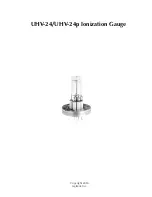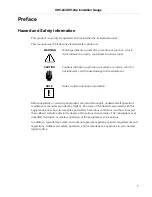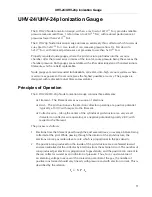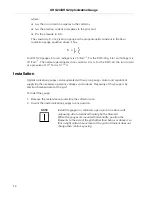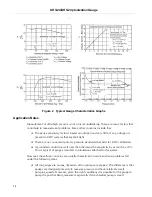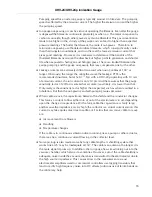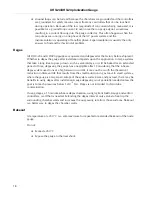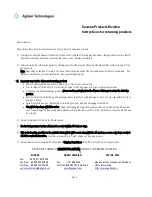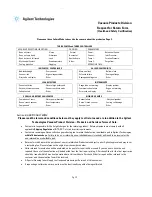
UHV-24/UHV-24p Ionization Gauge
DRAFT
11
UHV-24/UHV-24p Ionization Gauge
The UHV-24 Nude Ionization Gauge, with an x-ray limit of 2x10
-11
Torr, provides reliable
pressure measurement from 1 mTorr down to 2x10
-10
Torr, with reduced performance at
pressures lower than 2x10
-10
Torr.
The UHV-24p Nude Ionization Gauge utilizes an extremely thin collector which lowers its
x-ray limit to 5x10
-12
Torr. As a result, it can measure pressure from 1m Torr down to
5x10
-11
Torr, with reduced performance at pressures lower than 5x10
-11
Torr.
Properly mounted nude gauges, where the grid structure protrudes into the vacuum
chamber, offer the lowest error in terms of the local vacuum pressure being the same as the
chamber pressure. Both gauges are available with either dual tungsten or thoriated iridium
filaments, which are field replaceable.
Nude gauges are recommended for bakeable, all-metal, ultra-high vacuum systems where
maximum exposure to the vacuum gives the highest possible accuracy. The gauges are
designed with replaceable dual filament assemblies.
Principles of Operation
The UHV-24/UHV-24p Nude Ionization Gauge contains three elements:
❑
Filament – The filament serves as a source of electrons.
❑
Grid – The grid functions as the electron collector operating at a positive potential
(typ150 V) with respect to the filament.
❑
Collector wire – Along the center of the cylindrical grid structure is a very small
diameter ion collector wire operating at a negative potential (typically 28 V) with
respect to the filament.
The process is s follows:
1. Electrons from the filament pass through the grid several times, on average, before being
collected at the grid. While passing through the interior of the grid structure, the
electrons ionize gas molecules at a rate which is proportional to the gas density.
2. The positive ions produced on the inside of the grid structure are accelerated toward
and are neutralized at the collector by electrons from the external circuit. The number of
ions produced per electron is proportional to gas density, and the positive ion current to
the ion collector is used as an indication of pressure. Thus, for a constant value of
accelerating voltage in excess of the ionization potential of the gas, the number of
positive ions formed should vary linearly with pressure and with electron current. This is
described by the relation:
I
c
S P I
e
=
Содержание UHV-24
Страница 2: ...D R A F T 1 6 1 4 Copyright 2014 Agilent Inc UHV 24 UHV 24p Ionization Gauge...
Страница 4: ...UHV 24 UHV 24p Ionization Gauge This page intentionally left blank D R A F T 1 6 1 4...
Страница 6: ...UHV 24 UHV 24p Ionization Gauge This page intentionally left blank D R A F T...
Страница 10: ...UHV 24 UHV 24p Ionization Gauge This page intentionally left blank...
Страница 20: ...UHV 24 UHV 24p Ionization Gauge 20 D R A F T Table 2 Gas Correction Factor Table...
Страница 21: ...UHV 24 UHV 24p Ionization Gauge D R A F T 21 Table B 0 Gas Correction Factor Table Continued...
Страница 22: ...UHV 24 UHV 24p Ionization Gauge This page intentionally left blank D R A F T...
Страница 26: ...UHV 24 UHV 24p Ionization Gauge This page intentionally left blank...
Страница 27: ......


